IN CONVERSATION WITH: ANDREA GROSSI
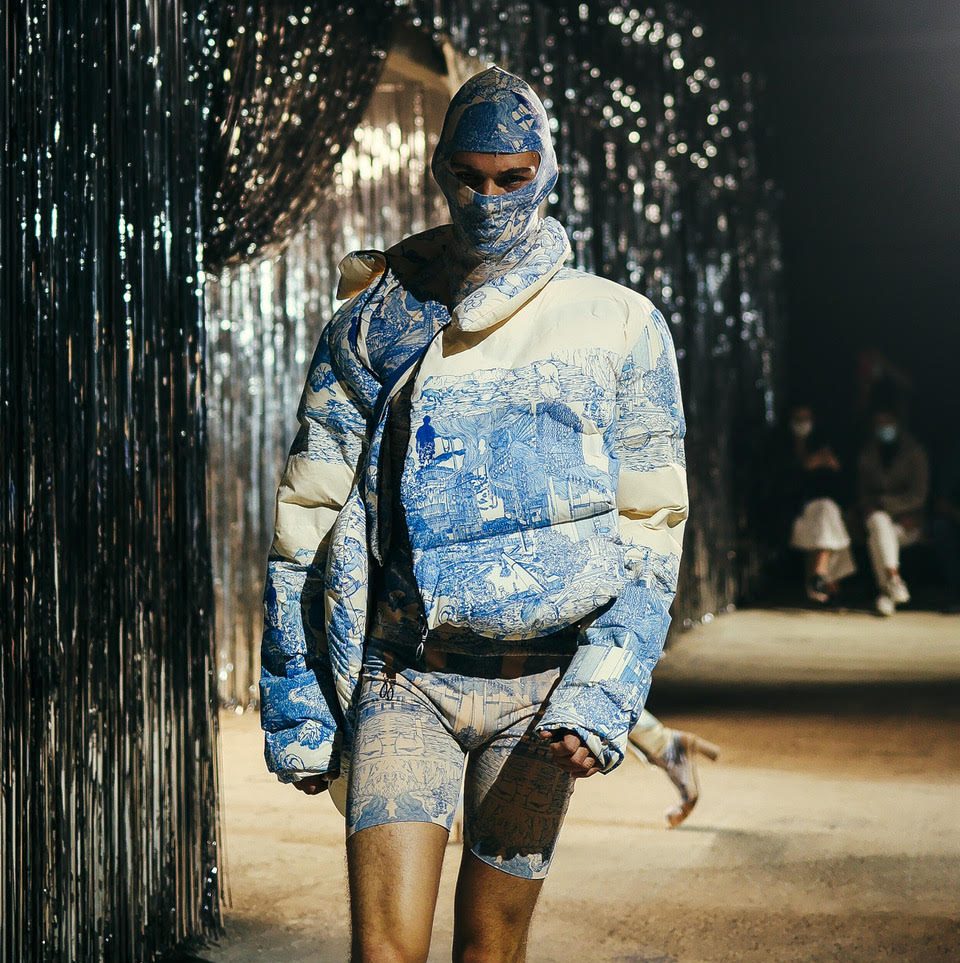

Andrea Grossi, menswear designer born in 1996, Polimoda graduate and finalist of the prestigious Hyères, International Festival of Fashion. He catched more and more attention during 2020 for his scenic creations and collaborated with huge names such as Chanel, Chloè, Ecco Leather, Swarovski, Premiere Vision, Fashion Open Studio e PuntoSeta.
We met him and we chatted about his vision of the future, his endless love for video games and his idea of fashion as an answer to the needs of society.
Tell us a little bit about you and your path. How did Andrea Grossi become Andrea Grossi?
I come from Reggio Emilia and I graduated at Polimoda, in Florence, in 2019. I started to work at Diesel as a designer, then I enrolled in Hyères with a simple sketch collection and I’ve been chosen among the ten finalists. I decided to make a very scenic and experimental collection, largely funded by Hyères itself, which supplied fabrics, sampling, collaborations with Chanel, Chloè.

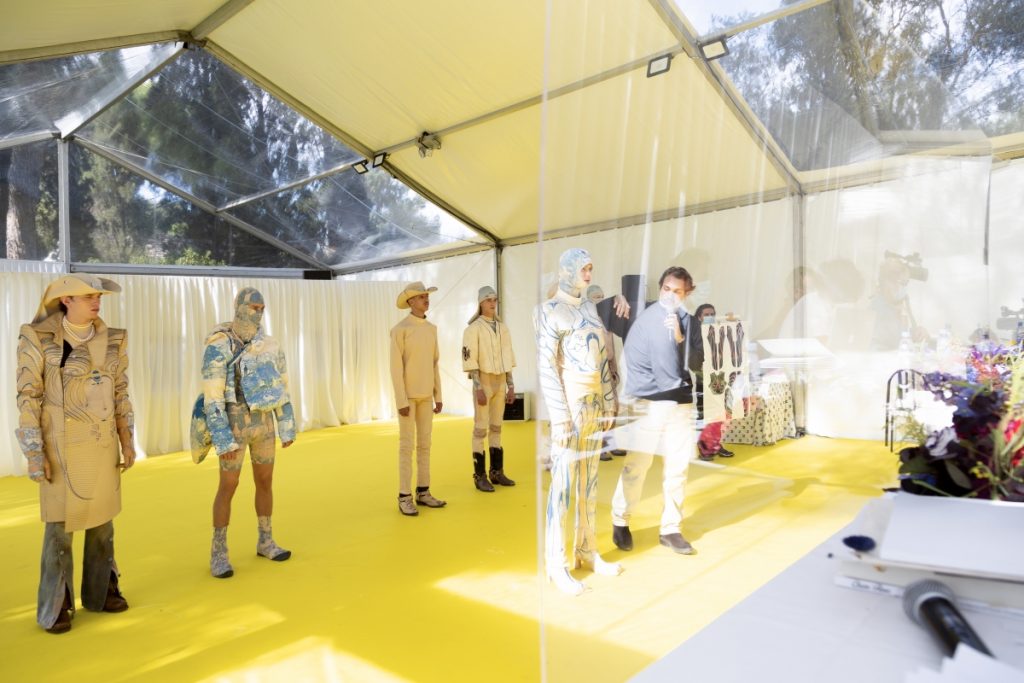
What a turning point. Was it very far off your usual style?
No, not really, it was just strongly scenical, it was not designed for sample books and showrooms. I experimented, I had a lot of fun, I learned so much but it hasn’t been evolving as an independent project. It’s way harder to make it by yourself. When there will be a new collection, it will be way more trade-oriented.
Are you saying you’re working on a new collection already?
There is a project of course, but it’s not that immediate. It will be more ready-to-wear, that’s for sure, but experimental all the way. I focused on sustainability and I’m working on a system to create some very special fabrics, always keeping an eye on my goal: to create simple items, marketable, which people want.
Cool pieces, manufactured with high craftsmanship.
I want to propose a new product with a purpose, a meaning and its own history, in order to fairly compete with the main luxury players. I want to create a sort of marriage between Central Italy artisan tradition and technical research. Using the processings of the leather industry on new materials such as vegetable tanned leather, like rhubarb vegetable skin and olive vegetable skin, and mixing laser cut, laser corrosion, embossing in order to create innovative effects and volumes.
Your name has been very noticed lately, you emerged with interesting collaborations in music and celebrity systems. How about this?
Yeah, I’m really excited about this. I’ve had a good answer on the Italian scene, I worked with Achille Lauro thanks to my previous PR agency and Nick Cerioni, his stylist. I often collaborate with Ramona Tabita and the artists she works with and lately I also got in touch with Laura Pausini.
Abroad, I met Grimes, Elon Musk’s wife. She’s super cool. I worked with many rappers from the US and a lot of queer personalities. I’m very pleased with the brand’s image and press set-up.
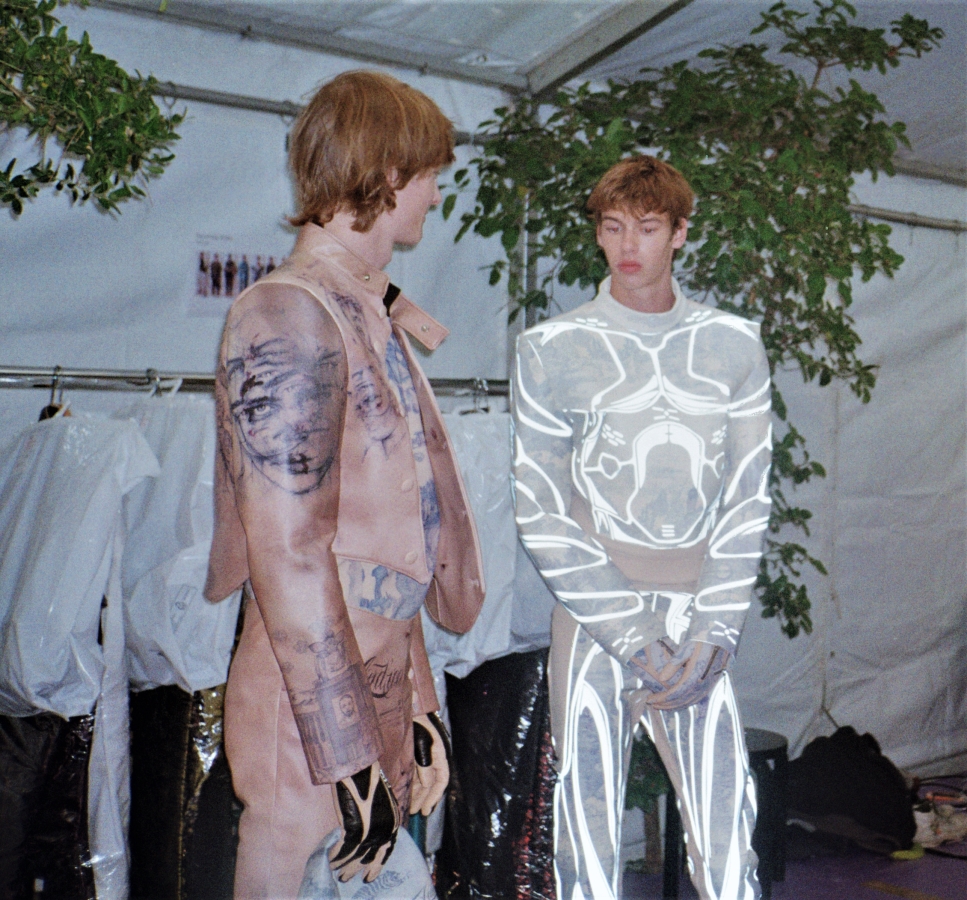

Is interesting that your items attracted queer world’s attention. Today gender identity and its expression is a huge theme for fashion. How do you perceive your style placement into gender debate?
Honestly, I don’t really know the reason why, but I’ve always tried to create items with a very definite gender identity. Very mascoline, very manly. Later, for my personal taste, I tried to mix this identity with more delicate patterns and solutions, like my blue print, for example. I’d say this contrast led me closer to the queer aesthetic.
It was not intended, but for sure I have been very influenced by colleagues and professors at Polimoda. I particularly feel a deep interest in my style coming from two worlds: queer world and Z-generation world, the young world of hip-hop in an Hypebeast way.
Your collections Welcome to Deusland Season 1 and Welcome to Deusland Season 2 seem to be two chapters of the same saga. How did this idea come up?
My first collection was the final project at Polimoda and it was inspired by a Yuval Noah Harari’s book, an Israeli author. Actually, it’s a trilogy, Homo Deus.
Since day one my idea was to create three editions of the collection, retracing the same structure of this opera and taking inspiration from its analysis and thoughts. The first book watches into human history and our past, the second one is focused on the goals and trends of society. The third and last book tries to find questions and good solutions to different problems of our society. In three words, past, present and future.
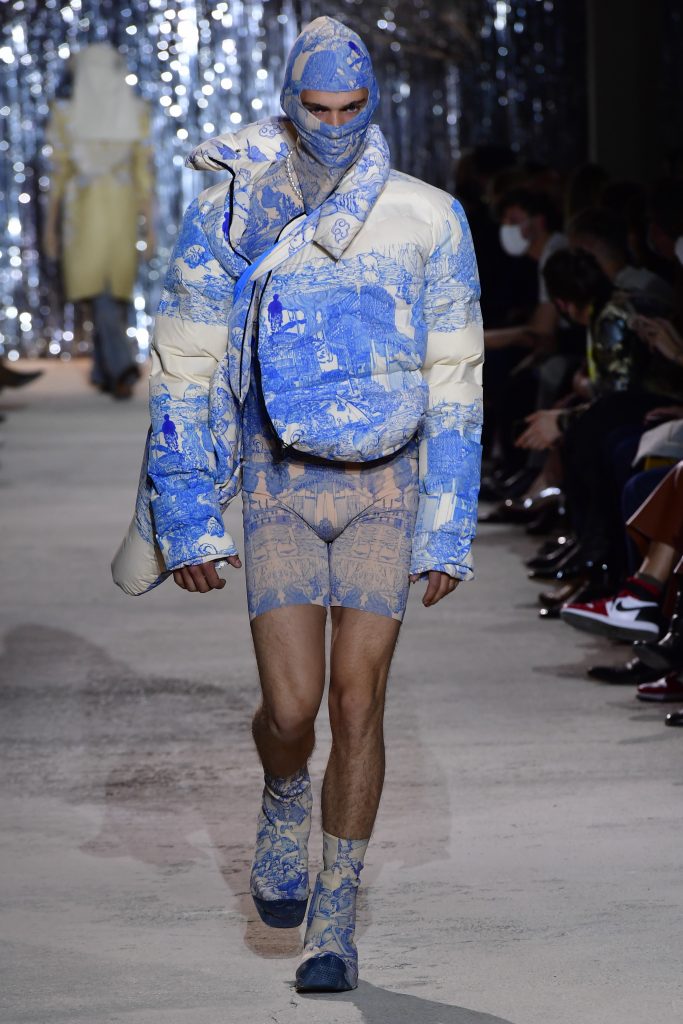
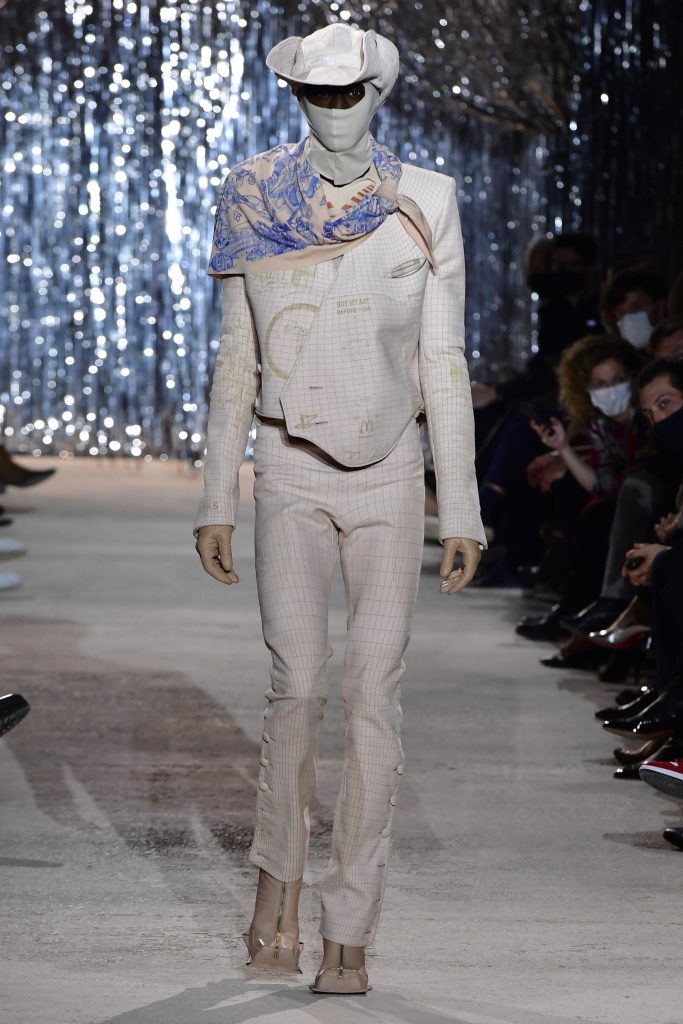
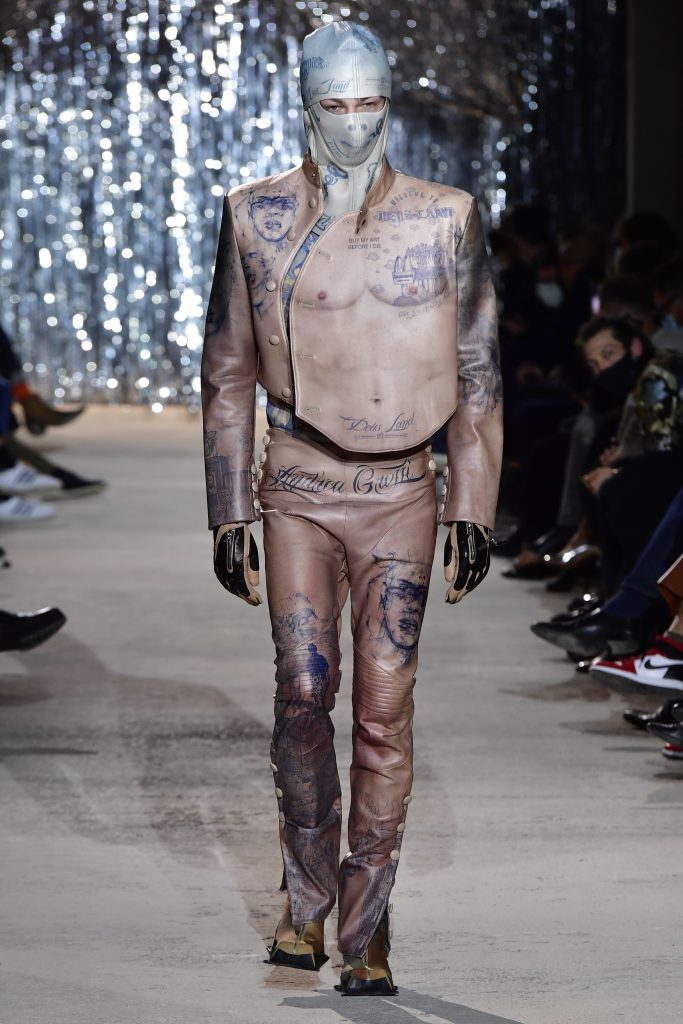
Past, present, future. Your aesthetic often recalls this concept and it seems to be the joint of each one of your references. First of all, your iconic blue pattern.
Yes, this pattern comes at the end of a huge research. It comes from the Toile de Jouy, a traditional ‘600, ‘700 pattern, showing some upper middle class scenes, printed over fabrics. I reviewed it by placing new elements in the same location, including characters of our days: the Church, the faces of the capitalistic world, McDonald’s. It’s like watching our society from the future, it’s a bit intricated.
Prints seem to be one unique tool you use for your conceptual rendering. I found it very interesting that one was reproducing the image of a man’s chest on a leather jacket. It’s like a layer which hides and shows at the same time.
For me body creation is one of the key points of the creative process.
I am really into video games and mangas and the moment I’ve always liked the most was the creation of the avatars. I look for recreating that same dynamic and feeling through garments.
For that particular jacket, I liked the idea of layering and catching a glimpse of a basic item under “the nude”, like for example a black T-shirt.

Plans for your near future?
My priority right now is to join a company, and I’m moving in that direction.
I got in touch with Diesel and Glenn Martens to get back to work with them. Diesel is a great company, it believes in you leaving you the creative space and the time you might need to develop your own projects. Renzo Rosso gives much importance to design and now there’s Glenn, who has a great energy, and which I admire a lot.
Diesel has a unique heritage and a great know-how about denim, which is a primary sector of menswear. There actually aren’t many other companies owning such competence to learn from on a technical level.
We talked about your future. And what do you foresee for the future of fashion?
Other than fashion itself, I’d make a wider point on the future of our economic society.
I strongly believe in capitalism and innovation coming from research. No doubts there must be a consumer re-education towards quality over quantity. This responsibility lies in the hands of the companies that will be able to bring better and more sustainable products in the market.
I believe that, from top brands and fast fashion companies to young and independent designers, everyone should move towards solutions designed for the achievement of this goal. Alternative fibres, enhanced retail, upcycling. The vision is to offer a solution to a current problem and surely no one can move away from this focus to create an effective project.
